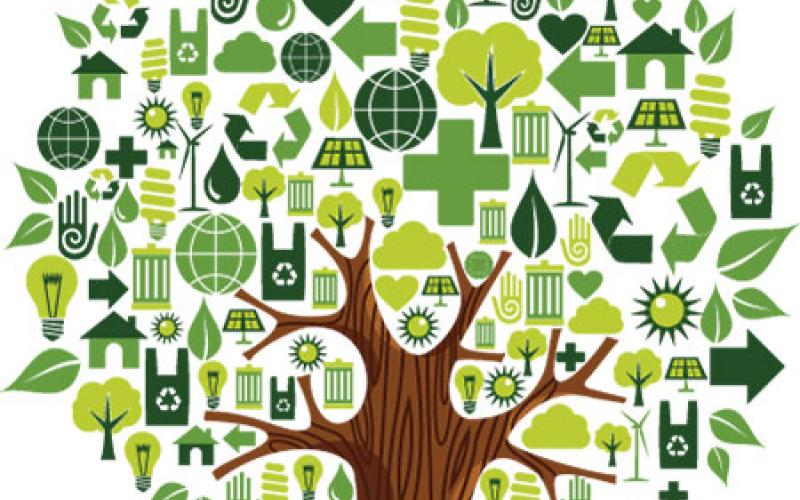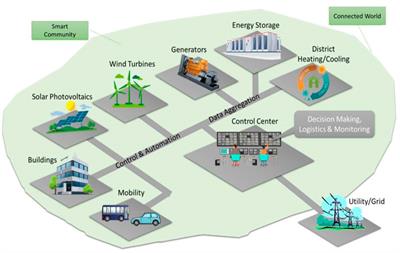In an era of increasing energy demands and growing concerns about climate change, modernizing our power grids has become imperative. One of the cornerstones of this transformation is the integration of energy storage systems. These systems play a pivotal role in enhancing the resilience, reliability, and efficiency of our power grids. In this article, we will explore the critical role that energy storage plays in grid modernization, ultimately forging a more sustainable and reliable energy future.
In the face of rising energy demands, environmental concerns, and the need for a more resilient and adaptive power infrastructure, the modernization of our power grids has become nothing short of an imperative. This transformation is multifaceted, but at its heart lies the integration of advanced energy storage systems. These systems are poised to revolutionize the way we generate, distribute, and consume electricity, ushering in a more sustainable and reliable energy future.
Grid Resilience: Energy storage systems are the linchpin in fortifying the resilience of our power grids. They act as a buffer against grid disruptions caused by extreme weather events, natural disasters, or cyberattacks. By storing excess energy during periods of stability, these systems ensure a consistent power supply even when external factors threaten to disrupt it.
Enhanced Reliability: The reliability of power grids is a fundamental concern for both consumers and industries. Energy storage systems bolster grid reliability by providing rapid response capabilities. They can instantaneously inject stored energy into the grid to compensate for fluctuations in supply or demand, effectively stabilizing voltage and frequency.
Efficiency Optimization: Energy storage optimizes the efficiency of power generation and distribution. It enables utilities to store excess electricity during periods of low demand and discharge it during peak hours when electricity costs are higher. This load leveling reduces the need for peaker plants, which are often less efficient and more polluting.
Integration of Renewable Energy: The intermittent nature of renewable energy sources like solar and wind presents a challenge for grid operators. Energy storage systems act as a bridge, storing surplus renewable energy during periods of high generation and releasing it when needed. This integration smooths out the variability associated with renewables, making them a more reliable source of power.
Demand Response: Energy storage facilitates demand response programs, where consumers can actively manage their electricity consumption during peak demand periods. By storing electricity during off-peak times when prices are lower and using it during peak hours, consumers can reduce their energy bills while alleviating strain on the grid.
Grid Decentralization: The adoption of distributed energy resources (DERs) such as rooftop solar panels and home battery systems is growing. Energy storage systems empower consumers to participate in grid services by feeding excess energy back into the grid or using stored energy when needed, contributing to grid decentralization and democratization.
Environmental Benefits: The integration of energy storage aligns with global efforts to reduce greenhouse gas emissions. By optimizing energy use, reducing the reliance on fossil fuel-based peaker plants, and facilitating the transition to renewable energy sources, energy storage systems play a pivotal role in mitigating climate change.
Technological Advancements: Ongoing research and development in energy storage technologies are driving down costs, increasing energy density, and extending the lifespan of batteries. These advancements make energy storage systems more accessible and economically viable for widespread adoption.
In conclusion, the integration of energy storage systems is a cornerstone of grid modernization, offering multifaceted benefits that extend beyond the realm of power generation and distribution. As we continue to face the challenges of an evolving energy landscape, these systems are instrumental in forging a more sustainable, resilient, and reliable energy future, one that meets the demands of a growing global population while minimizing our environmental footprint.
For additional details, consider exploring the related content available here Grid Modernization Multi-Year Program Plan

Energy storage systems are instrumental in managing peak electricity demand. During periods of high demand, such as scorching summer afternoons or frigid winter evenings, power grids often struggle to meet the load. Energy storage provides a reliable source of electricity during these peak times, reducing the risk of blackouts and ensuring a steady power supply for homes and businesses.
Energy storage systems are not only instrumental in managing peak electricity demand but are also catalysts for a more efficient and sustainable energy landscape. Here’s how they contribute to this transformative shift:
Load Balancing: Energy storage systems play a pivotal role in load balancing, where excess energy generated during off-peak hours is stored and discharged during peak demand periods. This results in a more evenly distributed and efficient use of electricity resources.
Grid Reliability: By acting as a buffer against fluctuations in energy supply and demand, energy storage enhances the reliability of power grids. It helps prevent overloads and voltage instability, reducing the risk of costly blackouts and brownouts.
Integration of Renewable Energy: As the world embraces renewable energy sources like solar and wind, energy storage becomes essential for bridging the intermittent nature of these sources. It allows excess renewable energy to be stored and deployed when needed, ensuring a steady power supply even when the sun isn’t shining or the wind isn’t blowing.
Reducing Peak Costs: Energy storage systems help utilities avoid purchasing expensive peak power during high-demand periods. This cost-saving benefit can lead to more affordable electricity rates for consumers and businesses.
Resilience in Extreme Conditions: During extreme weather events, such as hurricanes or winter storms, energy storage provides a critical lifeline by supplying emergency power to essential services like hospitals, emergency shelters, and communication networks.
Electric Vehicle Integration: As the adoption of electric vehicles (EVs) grows, energy storage can support the grid by managing the increased demand for charging. It enables smart charging strategies, ensuring that EVs are charged when electricity is plentiful and cost-effective.
Reducing Emissions: Energy storage facilitates the use of cleaner energy sources and reduces the need for fossil fuel power plants to meet peak demand. This shift helps lower greenhouse gas emissions, contributing to a more sustainable and environmentally friendly energy system.
Enhancing Grid Flexibility: Energy storage enhances grid flexibility by responding quickly to changes in supply and demand. This flexibility supports the integration of diverse energy resources and accommodates the evolving energy landscape.
Empowering Microgrids: In remote or off-grid locations, energy storage is a cornerstone of microgrid systems. These self-contained energy networks can operate independently or in conjunction with the main grid, increasing energy access and resilience in underserved areas.
Innovation and Research: The pursuit of more advanced energy storage technologies continues to drive innovation and research. Breakthroughs in battery chemistry, efficiency, and storage capacity are unlocking new possibilities for a cleaner and more sustainable energy future.
In conclusion, energy storage systems are not just about addressing peak electricity demand; they are integral to the transformation of our energy systems into more reliable, resilient, and sustainable networks. As technology advances and investments in energy storage grow, we can look forward to a future where our energy needs are met efficiently, cost-effectively, and with reduced environmental impact.
Additionally, you can find further information on this topic by visiting this page: How Energy Storage Works | Union of Concerned Scientists

As the world shifts towards renewable energy sources like wind and solar, energy storage becomes essential for balancing the intermittent nature of these resources. When the sun is shining, and the wind is blowing, excess energy can be stored in batteries or other storage systems. Conversely, when renewable sources are not generating power, stored energy can be seamlessly injected into the grid, ensuring a continuous and stable supply.
The global transition to renewable energy sources, such as wind and solar, represents a pivotal step in our collective effort to combat climate change and create a sustainable future. However, as we harness the power of these clean and abundant resources, we face a unique challenge—how to manage the intermittent nature of sun and wind. Energy storage emerges as the linchpin in this renewable energy revolution, offering a solution that not only bridges gaps in supply but also unlocks new possibilities for a resilient and green energy grid.
Harvesting Abundance, Tackling Variability: The sun and the wind, while bountiful sources of energy, are inherently variable. Clouds pass, and winds ebb and flow, creating fluctuations in energy generation. Energy storage systems, primarily batteries, provide a crucial buffer. When renewable sources are at their peak, excess energy is harvested and stored for future use. This surplus energy can then be deployed during cloudy days or calm nights, ensuring a continuous and stable supply of electricity.
Grid Stability and Reliability: Energy storage systems don’t just mitigate the intermittency of renewables; they also enhance the overall stability and reliability of the energy grid. By absorbing excess energy during times of plenty and discharging it when needed, these systems act as shock absorbers, smoothing out the peaks and troughs in power supply. This results in fewer power outages, reduced grid congestion, and improved grid resilience, even in the face of unforeseen events or natural disasters.
Unlocking the Potential of Distributed Energy: Energy storage isn’t limited to large-scale utility applications. It also plays a pivotal role in enabling distributed energy resources, such as rooftop solar panels. With the right storage solutions, homeowners and businesses can capture surplus solar energy during the day and use it in the evening, reducing their reliance on the grid and lowering electricity bills. This democratization of energy empowers individuals and communities to become active participants in the clean energy transition.
Accelerating the Transition to Renewables: Energy storage is not just a solution; it’s an accelerator. It unlocks the full potential of renewable energy sources, making them more viable and attractive to investors. The ability to store excess energy creates a market for renewable energy projects that might otherwise struggle with intermittency issues. This, in turn, drives down the cost of renewable energy technologies, making them increasingly competitive with fossil fuels.
Environmental and Economic Benefits: Beyond grid stability and reliability, energy storage contributes to environmental preservation. By reducing the need for fossil fuel backup power plants and minimizing energy waste, it helps lower carbon emissions and combat climate change. Simultaneously, the growing energy storage industry creates jobs and stimulates economic growth, offering a win-win scenario for both the environment and the economy.
In conclusion, energy storage is not just a complementary technology; it’s a transformational force in the renewable energy landscape. It bridges the gap between intermittent renewables and a continuous power supply, ensuring that our transition to clean energy is both sustainable and reliable. As we continue to innovate in energy storage technologies, we unlock new opportunities to accelerate the transition to a more sustainable and resilient energy future.
Explore this link for a more extensive examination of the topic: Grid Modernization and the Smart Grid | Department of Energy

Energy storage systems act as shock absorbers for the grid, smoothing out fluctuations and mitigating the effects of unexpected events, such as equipment failures or natural disasters. They provide a rapid-response mechanism to stabilize voltage and frequency, preventing grid instability that could lead to widespread outages.
nullFor a comprehensive look at this subject, we invite you to read more on this dedicated page: Grid Modernization and the Smart Grid | Department of Energy

The advent of energy storage has also spurred the development of microgrids, localized energy systems that can operate independently or in conjunction with the main grid. Microgrids equipped with energy storage can continue to provide power during grid outages, enhancing resilience and ensuring critical facilities like hospitals or emergency centers stay operational.
The emergence of energy storage technology has ushered in a new era of electrical resilience, where microgrids have become a linchpin in ensuring continuous power supply, even in the face of disruptions or natural disasters. These localized energy systems represent a remarkable fusion of innovation and practicality, offering a host of benefits that extend far beyond grid reliability.
Microgrids, as self-contained energy ecosystems, are designed to be versatile and adaptive. They can operate independently, drawing power from local renewable sources like solar panels or wind turbines, coupled with energy storage solutions like batteries. Alternatively, they can work in tandem with the main grid, seamlessly transitioning between modes as needed.
One of the most compelling advantages of microgrids lies in their ability to provide uninterrupted power during grid outages. Traditional power grids are vulnerable to various disruptions, ranging from extreme weather events to equipment failures, and these interruptions can have far-reaching consequences, impacting daily life, commerce, and even public safety. In contrast, microgrids equipped with energy storage serve as a robust and resilient backup, ensuring that essential services such as hospitals, emergency response centers, and critical infrastructure facilities remain operational when the larger grid falters.
This enhanced resilience is particularly crucial in emergency situations. During natural disasters like hurricanes, wildfires, or severe storms, microgrids can be a lifeline, maintaining power to critical facilities that are instrumental in disaster response and recovery efforts. Hospitals can continue to provide medical care, emergency shelters can remain functional, and communication systems can stay online, all thanks to the reliability of microgrids.
Furthermore, microgrids promote energy independence and sustainability. By integrating renewable energy sources and energy storage, they reduce reliance on fossil fuels and mitigate greenhouse gas emissions. This not only contributes to environmental conservation but also bolsters energy security by diversifying the energy supply.
Microgrids also empower local communities by allowing them to generate, manage, and distribute their own electricity. This fosters a sense of self-sufficiency and can lead to greater energy efficiency and cost savings over time.
As we confront the challenges posed by a changing climate and a growing demand for energy, microgrids equipped with energy storage represent a forward-looking solution. They exemplify the fusion of technological innovation and resilience, offering a glimpse into a future where power interruptions are no longer a hindrance and where communities have the tools to shape their energy destiny. In the quest for a sustainable and reliable energy landscape, microgrids have earned their place as a cornerstone of progress, capable of ensuring that the lights stay on, even in the darkest of times.
If you’d like to dive deeper into this subject, there’s more to discover on this page: Powering Through Change: How the Changing Electrical Power …

Energy storage can significantly reduce energy costs for consumers. By storing electricity during off-peak hours when rates are lower and discharging it during peak hours when rates are higher, consumers can save money on their energy bills. Additionally, grid operators can avoid costly infrastructure upgrades by using energy storage to meet peak demand.
Energy storage technologies have emerged as game-changers in the realm of energy management, offering a multitude of benefits that extend beyond mere cost savings. While reducing energy costs for consumers is indeed a compelling advantage, the impact of these innovations reaches far and wide, ushering in a new era of efficiency and sustainability.
Enhancing Energy Resilience: Energy storage not only saves money but also plays a crucial role in enhancing energy resilience. By providing a backup power source during outages, batteries ensure that critical facilities, homes, and businesses remain operational when the grid falters. This resilience is invaluable in situations ranging from extreme weather events to unforeseen emergencies, safeguarding both lives and livelihoods.
Empowering Renewable Energy: The integration of energy storage is pivotal for the widespread adoption of renewable energy sources such as wind and solar. These sources can be intermittent, making them less predictable than traditional fossil fuels. Energy storage systems bridge this gap by storing excess energy when it’s abundant and releasing it when needed, ensuring a steady and reliable power supply even when the sun isn’t shining or the wind isn’t blowing.
Mitigating Grid Congestion: Energy storage helps alleviate grid congestion by absorbing excess electricity during periods of low demand and injecting it back into the grid during peak hours. This not only reduces strain on the infrastructure but also minimizes the risk of blackouts, offering grid operators a more stable and efficient system to manage.
Promoting Sustainability: Beyond cost savings, energy storage aligns with sustainability goals by reducing the need for fossil fuel-powered peaker plants that often come online during periods of high demand. By curbing greenhouse gas emissions and supporting the transition to cleaner energy sources, energy storage contributes to a greener and more environmentally responsible future.
Unlocking New Possibilities: The versatility of energy storage systems extends to various applications, from supporting electric vehicle charging infrastructure to enabling microgrids in remote areas. These innovations open up new possibilities for transportation, industry, and remote communities, fostering economic growth and reducing reliance on fossil fuels.
Empowering Consumer Choice: Energy storage empowers consumers to take control of their energy usage, enabling them to store excess energy from their rooftop solar panels, for instance, and use it when it makes the most sense for them. This flexibility not only saves money but also encourages energy conservation and efficiency.
In essence, energy storage is more than just a cost-saving tool; it’s a transformative force shaping the future of energy management and sustainability. As these technologies continue to evolve and become more accessible, they will play an increasingly pivotal role in reshaping the energy landscape, offering consumers greater control, resilience, and environmental stewardship.
Explore this link for a more extensive examination of the topic: The Role of Energy Storage in Disaster Recovery and Prevention

The adoption of energy storage not only benefits grid reliability but also contributes to environmental sustainability. By optimizing the use of renewable energy sources and reducing the need for fossil fuel-based peaker plants, energy storage helps reduce greenhouse gas emissions and combat climate change.
The adoption of energy storage heralds a new era in the world of power generation and distribution. It’s a game-changer that not only bolsters grid reliability but also stands as a powerful ally in the fight for environmental sustainability.
At its core, energy storage serves as the linchpin in the integration of renewable energy sources into our daily lives. The sun doesn’t always shine, and the wind doesn’t always blow, but with efficient energy storage solutions, we can capture and store excess energy when these sources are abundant and then deploy it when needed. This synergy between renewables and storage forms a formidable duo, enabling a consistent and reliable power supply that’s no longer subject to the whims of weather.
One of the most significant environmental benefits of this synergy is the reduction of greenhouse gas emissions. Energy storage allows us to move away from fossil fuel-based peaker plants, which are traditionally called upon during periods of high demand. By storing excess energy during low-demand times and discharging it during peak periods, we diminish the need for these polluting plants. This translates into a substantial decrease in carbon emissions and a tangible step toward mitigating climate change.
Furthermore, the role of energy storage extends beyond emissions reduction. It serves as a crucial enabler for the electrification of various sectors, including transportation and industry. As electric vehicles become more prevalent, energy storage provides the infrastructure needed for widespread adoption. It’s the key to facilitating the transition from internal combustion engines to clean, electric mobility, further diminishing the environmental footprint of transportation.
In essence, the adoption of energy storage not only enhances grid reliability but also aligns seamlessly with our commitment to a greener, more sustainable future. It’s a technological leap that holds the promise of reducing our carbon footprint, minimizing our reliance on fossil fuels, and ensuring a cleaner, more environmentally friendly energy landscape for generations to come. The journey toward a sustainable tomorrow has gained a powerful ally in the form of energy storage, and as we continue to harness its potential, we take a significant stride toward a brighter, more eco-conscious future.
Explore this link for a more extensive examination of the topic: Grid Modernization Multi-Year Program Plan

Energy storage is at the forefront of grid modernization efforts worldwide. It is reshaping the way we generate, distribute, and consume electricity, making our power grids more resilient, efficient, and environmentally friendly. As we continue to advance battery technology, explore new storage solutions, and invest in grid infrastructure, the crucial role of energy storage in grid modernization becomes increasingly evident. It is not just a technological advancement; it is a cornerstone of a cleaner, more reliable, and sustainable energy future that benefits us all.
nullFor a comprehensive look at this subject, we invite you to read more on this dedicated page: The enhancement of resilience to disasters and climate change in …

More links
To delve further into this matter, we encourage you to check out the additional resources provided here: Reimagining and rebuilding America’s energy grid | Department of …
